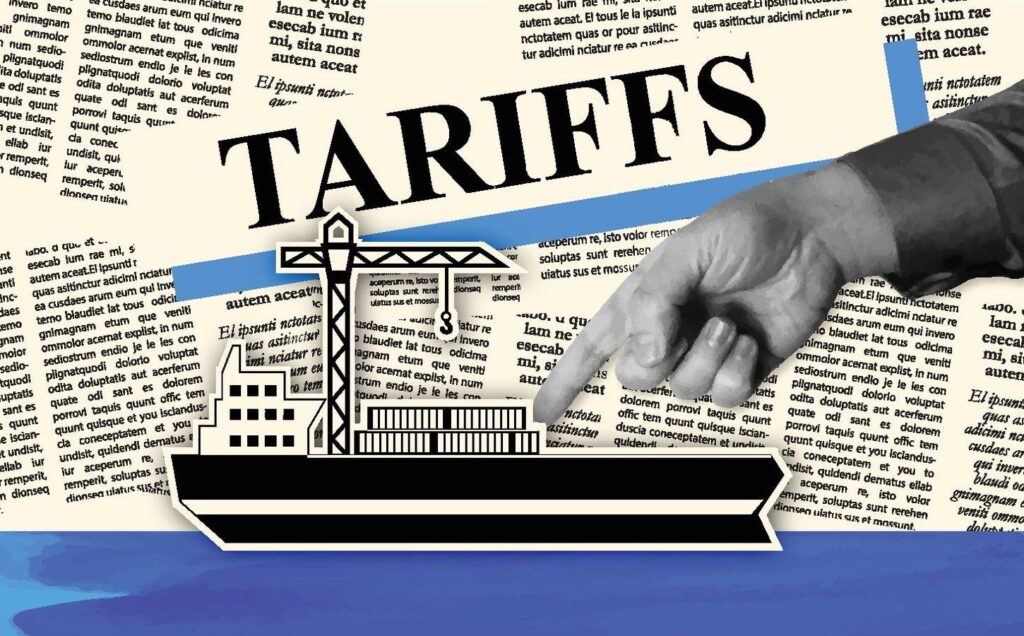Trump’s new tariffs—some as high as 145%—are hitting small businesses the hardest and threatening their ability to survive.
What began as a geopolitical strategy has now become a direct threat to the livelihood of small business owners. Without meaningful relief, the backbone of American entrepreneurship could suffer the most severe consequences.
Small businesses typically operate lean, unlike large corporations with deep pockets, supply chain redundancy, and legal teams to handle disruptions. Smaller companies rely on speed and agility to compete — often launching innovations far faster than larger companies burdened with lengthy internal approval processes. However, that agility becomes irrelevant for smaller brands when tariffs disrupt access to affordable materials.
Large corporations have the advantage of buying power. They can negotiate better terms, absorb sudden cost increases, and pivot sourcing strategies quickly—often with multiple backup suppliers already in place.
In contrast, small consumer packaged goods (CPG), wellness, home goods, fashion, accessories brands, and even smaller construction companies sourcing materials from China typically rely on long-standing relationships with manufacturers. These connections—often built through trade shows, industry networking, and personal referrals—offer access to lower minimum order quantities (MOQs), favorable terms, and more competitive pricing. These trusted partnerships make it possible for small businesses to operate and grow.
Shifting away from long-standing partnerships isn’t simple. For many small businesses, U.S. manufacturing cannot compete with China’s infrastructure, speed, or cost-efficiency. In industries that rely on materials like plastic, glass, paper, and aluminum, it’s common for U.S. companies to fulfill small domestic orders. However, once businesses hit certain order thresholds, production often shifts overseas—out of financial necessity and because many domestic manufacturers moved offshore decades ago. Even when companies try to source locally, scaling typically forces them abroad, making it nearly impossible for many small businesses to manufacture packaging and materials entirely within the United States.
“In theory, bringing manufacturing back to the U.S. sounds great—but we don’t have the infrastructure to support it. Small businesses will suffer the most, while larger industries like electronics are already receiving tariff exemptions,” says Sebastian De Vivo, a financial advisor at the Small Business Development Center (SBDC).
Many small businesses relying on China are scrambling to find suppliers in countries with comparable pricing and production capabilities. But for small businesses, replacing a manufacturer isn’t easy. It often means starting from scratch—vetting new factories, negotiating pricing, investing in new tooling and molds, waiting weeks or months for samples, and navigating unfamiliar regulations, taxes, and import processes. For small businesses, this disruption can delay product launches by quarters—or even years—costing tens of thousands or more. Most lack the team, capital, or infrastructure needed to survive such a transition.
California Governor Gavin Newsom is pushing for an exemption for California-made products from the latest round of tariffs. According to a recent statement from his office, “Retaliatory tariffs will also have an outsized impact on California businesses, particularly its more than 60,000 small business exporters. Mexico, Canada, and China are California’s top three export destinations, accounting for nearly $67 billion in exports—over one-third of the state’s $183 billion in total exported goods in 2024.”
The statement also highlighted that retaliatory tariffs are hitting farmers and ranchers especially hard at a time when the U.S. agricultural economy is already struggling—further underscoring the need for mitigation efforts and expanded access to foreign markets.
“For many small and mid-sized businesses that rely on imports from China, these tariffs are existential,” says Los Angeles-based business attorney David Schnider. “Most are holding off on placing orders, hoping the situation improves. Ports are slowing, and shipments from China are rapidly declining. If the tariffs aren’t lifted in the coming weeks, retailers will face supply shortages and rising prices during the holiday season. Many of the small businesses I work with are seriously considering shutting down entirely.”
Schnider also predicts widespread sales losses and layoffs. Since most businesses cannot quickly reshore production, they have little choice but to raise prices or absorb devastating losses.
The last major economic blow to small businesses came during the COVID-19 pandemic when financial assistance was available to help eligible companies survive. Today’s landscape is different. Businesses facing sudden cost increases on ingredients, packaging, and finished products are forced to pivot quickly—navigating unfamiliar territory with little support or relief.
As Allison Kent-Gunn Garibay, Cosmetic Packaging Sales Director, explains:
“Some brands are being forced to scale back on costly initiatives like innovation and sustainability to stay afloat. It’s a harsh reality—especially for companies that are among the most values-driven and sustainability-focused in the industry.”
Still, Garibay remains optimistic. She’s witnessed resilience firsthand, with many of the brands she supports successfully pivoting to manufacturing partners across Mexico, Vietnam, Canada, India, and Colombia—along with select domestic options—helping stabilize costs and build more localized, agile supply chains.
“It’s not an easy transition,” she says, “but for those willing to rethink their sourcing strategies, there’s a path through the turbulence.”
Read the full article here











